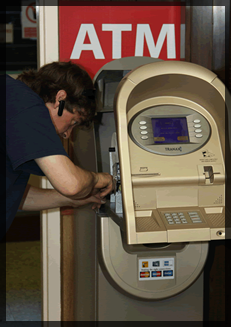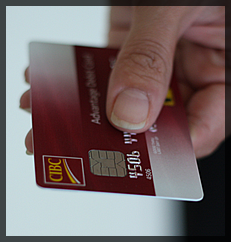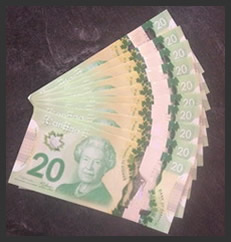





The Move To EMV Chip Cards
In an effort to combat fraud and increase security, Interac announced it will be moving to EMV Chip Card. as of December 31, 2012 all ATM transactions must be a chip transaction or they will be declined. A smart card, chip card, or integrated circuit card, is any pocket-sized card with embedded integrated circuits. There are two broad categories of ICCs. Memory cards contain only non-volatile memory storage components, and perhaps dedicated security logic.
The main benefit to this technology over the existing magnetic stripes is that the chips are almost impossible to copy due to high levels of encryption. This is seen as being able to reduce the amount of debit card fraud caused by card skimming and duplication. However new Interac Chip Cards will continue to feature a magnetic stripe in the interim in order for them to be used at ATMs or retailers which have not yet been upgraded, as well as in countries which have not yet adopted chip cards, such as the United States.
The purchase experience for consumers will remain largely unchanged, except instead of swiping the card, it will be inserted into a chip reader on the PIN Pad and will remain inserted for the duration of the transaction.
(Source - Interac)




New Canadian polymer $100, $50 & $20 bill and your ATM
Call Friendly City ATM for all your polymer note upgrade needs. Beginning in November 2012 The Bank of Canada will be releasing the new $20 polymer bank note. New polymer banknotes demand that all money-handling machines in the country be upgraded at a cost of $75-100 million, the Bank of Canada estimates. That compares to $20-30 million for the last conversion in 2004-2006, The new $50 and $100 bills came into circulation last year, made of a smooth, film-like polymer material and incorporating such high-tech security features as the world's first transparent windows with embedded metallic pictures.
The $20 bill goes into circulation in November, the $10 and $5 in 2013. Although the currency size remains unchanged, the texture, security enhancements and relative lightness of the new bills necessitate machinery upgrades. "In Canada, we have 500,000 machines that accept, dispense or sort bank notes," Girard said. "They include ATMs, parking machines, and sorting machines that banks and financial institutions use - the full gamut."
Automated Teller Machines, or ATMs, number 75,000 alone. So far, the mechanisms affected mainly include institutional ones that count and sort $50 $100 notes. But in the coming months, other money-machine owners will have to adjust, modify, convert or replace their equipment as lower denomination polymer bills come on board.
The sensors do not pick up the see-through part of the note, which means a service technician will have to move the sensor half an inch one way or the other. There are other issues with the new notes being slippery and some machines ability to handle them. The showcase security feature - a world first - is the large see-through window running vertically toward the right on the face side, next to the portrait on the bill.
Sooner or later, counterfeiters are expected to catch up to the bank's technologists. The new series is given a lifespan of eight years, when machine upgrades must begin again



